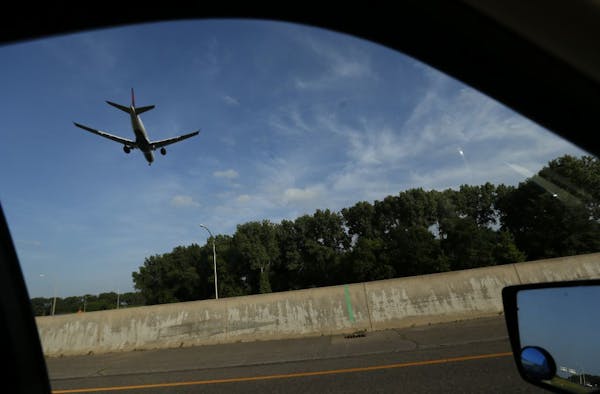You've seen them along the side of the road or maybe attached to utility poles — crosses, balloons, flowers, stuffed animals, photos and tributes — memorials left by well-wishers in memory of somebody who was killed in a car crash or perhaps at the hand of violence, marking the spot the person was last seen alive.
Roadside memorials can be an important part of the grieving process for family members and friends, the Minnesota Department of Transportation recognizes, but they can also pose dangers for those who stop to view them or become a distraction to drivers. For that reason, memorials are prohibited on rights of way, meaning medians and shoulders of state highways.
MnDOT's Kent Barnard, who noted that it is illegal to stop on the freeway except in the case of an emergency or vehicle breakdown, said there have been cases in which people have been hit while standing at roadside tributes.
MnDOT crews or the State Patrol will remove memorials that are too close to the road or are deemed to be distracting or pose a safety hazard.
"That does not mean MnDOT is insensitive," Barnard said. At times, the agency will allow memorials to stand for a short time if they are far enough off the road, not distracting, and the area can be maintained adequately.
That was the case with a large memorial set up along County Road 96 where two Mounds View High School students were killed in a December car wreck. The state even closed the road for a short time to allow students and family members to gather and grieve near three crosses set up in memory of Bridget Giere and Stephanie Carlson.
Crosses have since been moved off state property and will be moved onto the property of nearby North Heights Lutheran Church. That is much safer and "makes it easier [on visitors] than stopping on roads to pay respects."
Barnard says MnDOT has safer alternatives for remembering the deceased. One idea, he recommended, is to participate in the Adopt a Highway program. Through the program, community groups, churches, individuals or businesses pick up litter on both sides of a stretch of road at least twice a year over a two-year period. In return, MnDOT posts a state-approved sign in memory of a loved one or in recognition of the participating group.
The rules are much the same along Hennepin County roads, said Steve Groen, right-of-way use manager for the county's transportation department. While county policy does not allow any type of memorials, Groen said, "it's hard to enforce." The county will leave them alone if they don't create an obstruction. However, he added, crews will remove them if a complaint is filed.
The guidelines are slightly different for memorials set up along city streets in Minneapolis, said Mike Kennedy, the city's street superintendent. And they are legal.
The city will let them stand for "an appropriate time of mourning," usually a couple of weeks, he said. Then they will be taken down and items will be held for a month in case somebody wants to retrieve them.
In cases in which memorials are deemed unsafe for motorists or present a road hazard, the city will do what it can to make the site safe before removing them.
However, if they are painted on pavement, that constitutes graffiti and the city would step in quickly to remedy that, Kennedy said.
Follow news about traffic and commuting at The Drive on startribune.com. Got traffic or transportation questions, or story ideas? E-mail drive@startribune.com, tweet @stribdrive or call Tim Harlow at 612-673-7768.

Minnesota TikTokers react to app's ban in the U.S.
Minnesota sales, cleanups and other events to celebrate Earth Day and Arbor Day
Minnesota state senator's burglary arrest puts private family drama in the election year spotlight
Minneapolis pushes to recruit more employers for youth internship program

